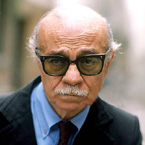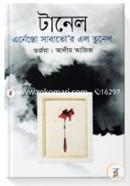
follower
এরনেস্তো সাবাতো
Ernesto Sabato was born on June 24, 1911, in Rojas, Buenos Aires Province, son of Francesco Sabato and Giovanna Maria Ferrari, Italian immigrants from Calabria. His father was from Fuscaldo, and his mother was an Arbëreshë (Albanian minority in Italy) from San Martino di Finita.He was the tenth of a total of eleven children. Being born after his ninth brother's death, he carried on his name "Ernesto". In 1924 he finished primary school in Rojas and settled in the city of La Plata for his secondary education at the Colegio Nacional de La Plata. There he met professor Pedro Henríquez Ureña, an early inspiration for his writing career. In 1929 he started college, attending the School of Physics and Mathematics at the Universidad Nacional de La Plata. He was an active member in the Reforma Universitaria movement, founding "Insurrexit Group" in 1933 – of communist ideals – together with Héctor P. Agosti, Ángel Hurtado de Mendoza and Paulino González Alberdi, among others. Sabato tells an anecdote of his life: He said, who was born in Santos Lugares, who was never going to leave because it was a place where he went unnoticed. He says that people in the neighborhood said of him: "Surely that is not a famous writer, if he was born around the corner from my house" In 1933 he was elected Secretario General of the Federación Juvenil Comunista (Communist Youth Federation). While attending a lecture about Marxism he met Matilde Kusminsky Richter, aged 17, who would leave her parents' house to live with Sabato. In 1934 he started to doubt communism and Joseph Stalin's regime. The Communist Party of Argentina, which had noted this, sent him to the International Lenin School for two years. According to Sabato, "it was a place where either you recovered or ended up in a gulag or psychiatric hospital". Before arriving at Moscow, he traveled to Brussels as a delegate from the Communist Party of Argentina at the "Congress against Fascism and the War". Once there, fearing not coming back from Moscow, he left the congress to escape to Paris. It was there where he wrote his first novel: La Fuente Muda, which remains unpublished. Once back in Buenos Aires, in 1936, he married Matilde Kusminsky Richter. In 1938 he obtained his PhD in physics from the Universidad Nacional de La Plata. Thanks to Bernardo Houssay, he was granted a research fellowship in atomic radiation at the Curie Institute in Paris. On May 25, 1938 Jorge Federico Sabato, his first son, was born. While in France he made contact with the surrealist movement, studying the works of Oscar Domínguez, Benjamin Péret, Roberto Matta Echaurren and Esteban Francés among others. This would have a deep influence on his future writing. In 1941, Sabato published his first literary work, an article about La invención de Morel by Adolfo Bioy Casares, in the magazine Teseo from La Plata. Also, in concert with Pedro Henríquez Ureña, he published a collaboration in the renowned Sur magazine. In 1948, after being rejected by several Buenos Aires' editors, Sabato published in Sur his first novel, El túnel, a psychological novel narrated in first-person. It has been further translated to more than 10 languages. Sabato died in Santos Lugares, on April 30, 2011, two months short of his 100th birthday.
এরনেস্তো সাবাতো এর বই সমূহ
(Showing 1 to 1 of 1 items)

 Sign in
Sign in  Cart
Cart 